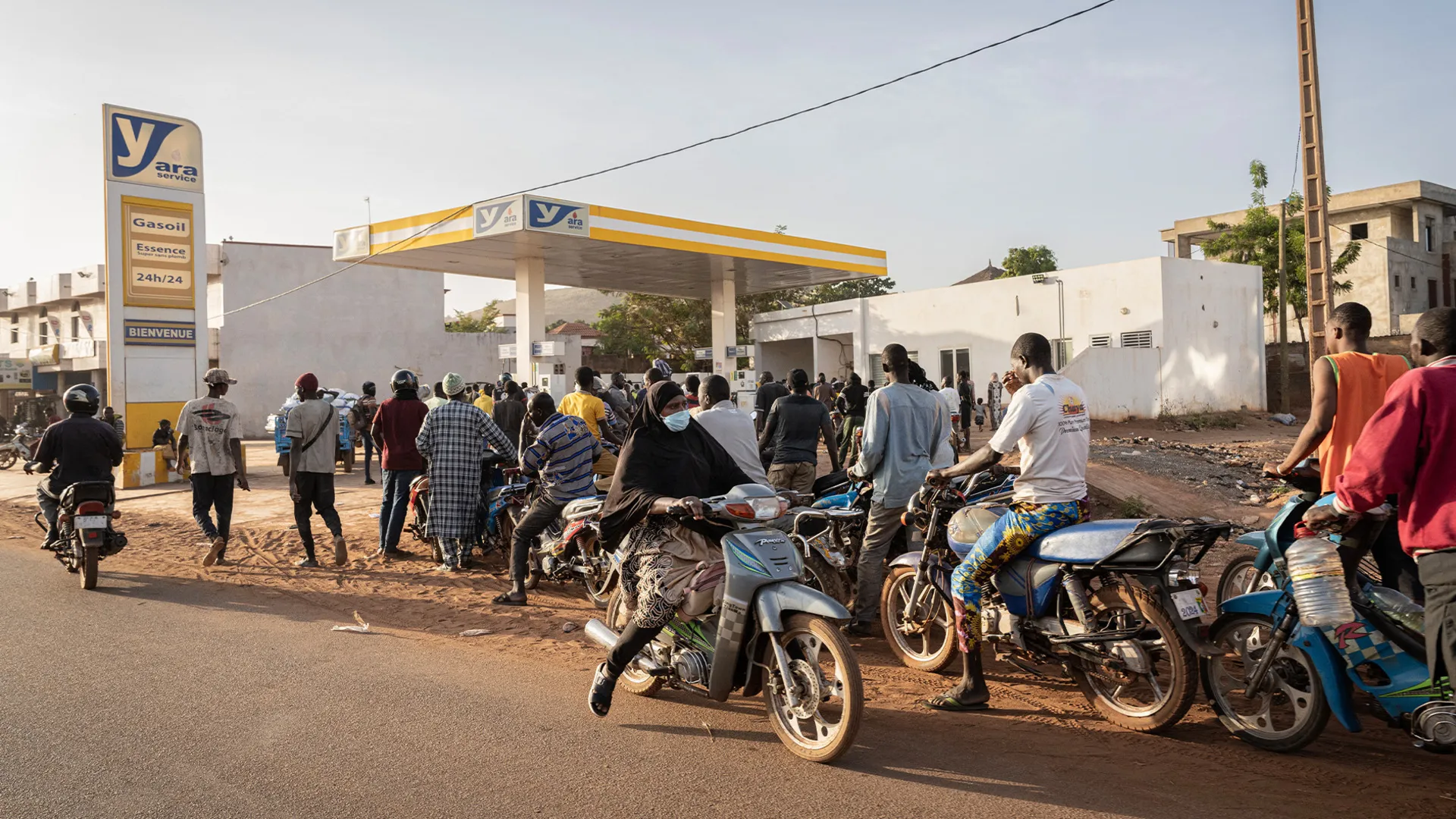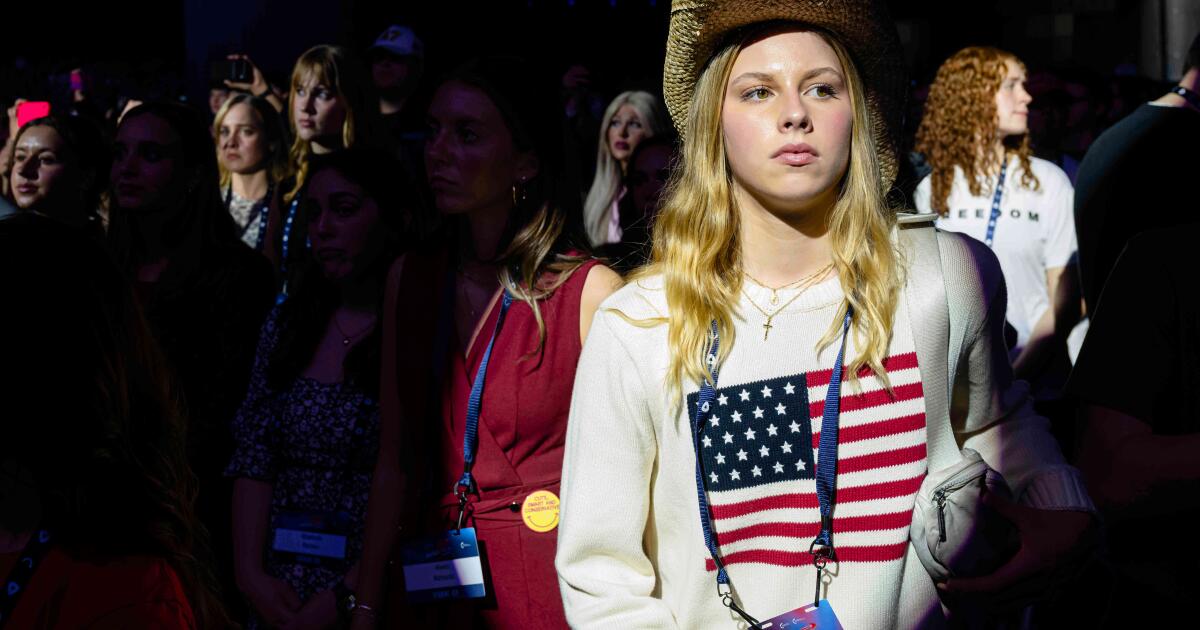PHOENIX — Camdyn Glover used to be a quiet conservative. She worried what her teachers would think or if she would lose friends over her convictions. But she said something changed when Charlie Kirk was assassinated in September, and she started crying in her classroom at Indiana University while other students cheered and clapped.
“We can’t be silenced,” Glover decided.
Now she’s visiting Phoenix with her parents and brothers for this year’s Turning Point USA conference, the first to take place since Kirk’s death. Although the organization became a political phenomenon with its masculine appeals to college men, it’s also been expanding outreach to young women like Glover. The shift is poised to accelerate now that Turning Point is led by Erika Kirk, Charlie’s widow, who has embraced her new role at the helm of a conservative juggernaut with chapters across the country.
If successful, the organization that helped return President Trump to the White House could narrow a gender divide that has been a persistent challenge for Republicans. Turning Point offers a blend of traditional values, such as encouraging women to prioritize marriage over careers, and health trends pushed by online influencers.
Glover, 18, said discovering Turning Point in high school gave her an appreciation for dialogue when she felt like an outcast for her beliefs, such as being anti-abortion. At her first conference, she feels like she’s found a political and cultural home for herself.
“They want to promote a strong independent woman who does hold these values and can go stand up for herself,” she said. “But it’s also OK to do it in heels, put some makeup on, wear a dress.”
‘If Erika can do it, I can do it’
One of Glover’s classmates, Stella Ross, said she stumbled upon Charlie Kirk on TikTok in the months before the last presidential election.
She already felt like her perspectives were being treated differently on campus and thought she was receiving unfairly low grades in her political science classes. A devout Catholic, Ross said she was inspired by how Charlie Kirk wasn’t afraid to weave his evangelical faith into his political arguments.
She also noticed how many women posted comments of appreciation on Erika Kirk’s videos, and she joined Indiana University’s Turning Point chapter in the same month that Trump won his comeback campaign.
“I was like, wow, if Erika can do it, I can do it,” Ross said.
Ross has career aspirations of her own — she interns with Indiana’s Republican Party and aspires to be a press secretary for a governor or president. But she hopes to have flexibility in her job to be fully present with her children and believes that a traditional nuclear structure — man, woman and their children — is “God’s plan.”
When she thinks of Erika Kirk, “it’s really cool to see that she can live out that balance and it makes me feel like that could be a more realistic future for me because I’m seeing it firsthand.”
A new messenger
Erika Kirk often appeared alongside with her husband at Turning Point events. A former beauty pageant winner who has worked as a model, actress and casting director, she also founded a Christian clothing line and a ministry that teaches about the Bible.
In a recent interview with The New York Times, she said she had fully bought into “boss babe” culture before Charlie showed her a “healthier” perspective on life. Now she leads the multimillion-dollar organization, which she said at a memorial for her husband would be made “10 times greater through the power of his memory.”
The political gap between young men and women has been growing for years, according to a recent Gallup analysis. Not only have women under 30 become more likely to identify as ideologically liberal, they’ve also embraced liberal views on issues such as abortion, the environment and gun laws.
The schism was clearly apparent in the last presidential election, where 57% of male voters under 30 supported Trump, compared to only 41% of women under 30, according to AP VoteCast.
Turning Point has been working to change that, hosting events like the Young Women’s Leadership Summit and urging attendees to embrace traditional family values and gender roles.
Charlie Kirk said earlier this year that if a young woman’s priority is to find a husband, she should go to college for a “MRS degree.” Matthew Boedy, a professor of rhetoric at University of North Georgia, said Erika Kirk could be a more effective messenger because she was focused on her career before meeting her husband.
“I do think her story resonates more because she tried it out and can tell them it is not for them,” he said.
Some conservative women are turned off by this approach. Raquel Debono, an influencer who lives in New York City, described the event as a “Stepford wives conference,” featuring women in pink floral dresses.
She said Turning Point’s emphasis on being traditional wives “leaves out a lot of women who work,” she said, “and I think they’re going to lose all those voters, honestly, in the next election cycle if they keep it up.”
Debono founded her own organization, Make America Hot Again, where she throws parties intended to make voters feel welcomed into the conservative movement and allow them to get to know people who share their politics.
‘Big time’ growth for some chapters
Aubree Hudson had been president of Turning Point’s chapter at Brigham Young University for only two weeks when she visited nearby Utah Valley University for an event with Charlie Kirk.
She said she was standing only about six feet away when he was fatally shot. She ran to find her husband, who was at the back of the crowd, and they fled to her car.
Hudson, 22, is from a rural farm town in southwestern Colorado. Her conservative convictions are rooted in her family’s faith and patriotism. A copy of the U.S. Constitution hangs in her parents’ home, and her father taught her to value God, family and country, in that order. Her mother stayed at home, telling her children that “you guys are my career.”
Since Kirk’s assassination, Hudson said the number of people — particularly women — getting involved with the organization jumped “big time.”
Emma Paskett, 18, is one of them. She was planning to attend the Utah Valley University event after one of her classes, but Kirk was shot before she made it there.
Although she wasn’t very familiar with Turning Point before that point, Paskett said she started watching videos of Kirk later that night.
Paskett considers Erika Kirk to be a “one in a million” role model, and her role as a leader was a driving factor in signing up.
“That’s exactly what I want to be like,” she said.
Govindarao writes for the Associated Press. AP writer Amelia Thomson-DeVeaux contributed to this report from Washington.




